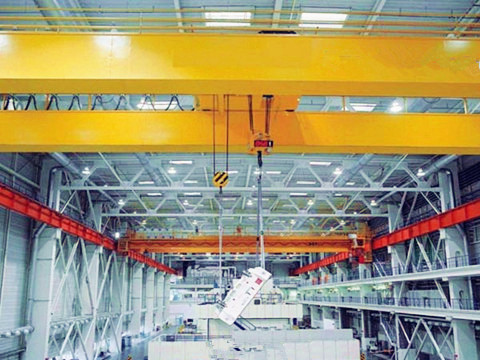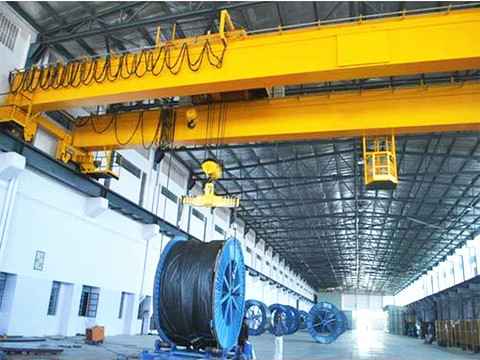A 40 ton overhead crane has the capacity to lift 40 tons. It is fit for use in warehouses, plants and material yards to lift up and transport items. The crane is configured with a double girder and equipped with an operation and control cabin. The crane is comprised of the following parts; lifting unit, bridges, a trolley, crab travelling, a control cabin, conductive devices to the power supply, etc. The lifting mechanism is central to the maneuvering of the hook during its descent and ascent.

It is always important to conduct your crane operations safely to avoid accidents, breakdowns or conflict with regulators. The following are some safety considerations to implement during operation.
- First, check the power supply
Always ensure the power connection is sufficient and functional. For safety during a power failure, cranes that do not have momentary contact push-buttons or spring-return controllers should have a device that facilitates disconnecting all motors from the power line. Also, no motor should be restarted until pressing the reset button or after the controller handle has been switched to off.
2. Check and test the brakes
Before beginning loading, the operator should use a test load to check the brakes. This is done by lifting the load slightly from the ground and then using the brakes to test functionality.
3. Adjust the speed to a smooth level
The speed should be adjusted to a controllable and safe level. Each hoisting section should have a functional holding brake. It is also important to check the control brakes to ensure they are functioning. Preventing over-speeding requires that for each hoist its upper limit switch be tested without any load. If the switch is observed to be faulty, a qualified person in charge should be notified immediately.
4. Adhere to the cranes capacity limits
Capacity limits for any crane are there for a reason. In this cranes case, it is dangerous to lift weights that exceed 40 tons.

5. Do not lift explosive or flammable loads
Flammable and explosive items are dangerous loads to handle. Cranes that are for general use should not be used to lift flammable or explosive items. Only cranes specifically designed for such environments with customized protections and procedures should be used for this purpose.
6. Only qualified and fit personnel should operate the crane
Only designated personnel, approved test and maintenance technicians and trainees under supervision should operate the crane. The operator of the 40 ton overhead crane should be fully fit and free from any distractions that can divert his attention. Each operator must enable the warning device during crane travel. In addition, before any maintenance, the main switch should be locked in a de-energized position.
Safety must be the top priority when operating a 40 ton overhead crane. Emphasis should be placed on the equipment, procedures and the quality of personnel. It is always necessary to remain diligent to prevent an accident. Considering safety issues should not be seen as negative. In fact, it ensures maximum productivity by avoiding accidents and breakdowns.
